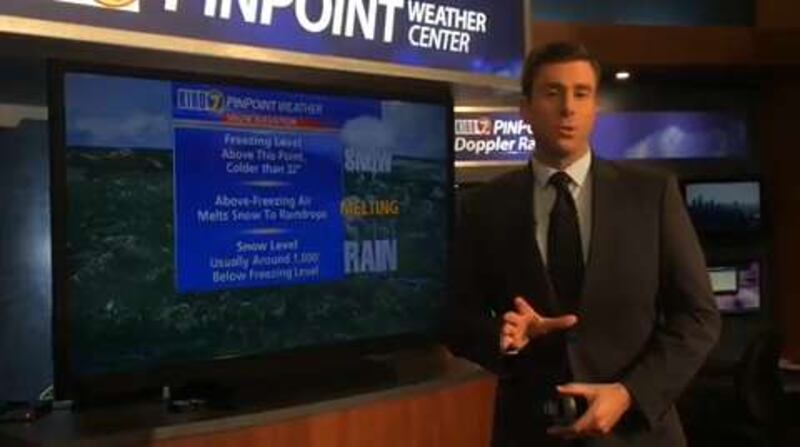Q: How is the freezing level different from the snow level?
A: Above the freezing level point, wherever it may be, the temperature is colder than 32 degrees and we usually get snow at that point.
There’s a melting layer thought below the freezing level and to the place we call the snow level. In that zone we have air that’s above freezing, but snow often takes an average of about 1,000 feet of above freezing air to melt into raindrops. So often that snow level is just about 1,000 feet below the point where it’s 32 degrees in the mountains.
Now there always can be some changes to that depending on the amount of precipitation and how hard it’s snowing, but that’s generally the rule of thumb.
Below that snow level usually we’re down into just rain or some wet snowflakes mixed in, but it’s that 1,000 foot level between 32 degrees and where the snowflakes have finally melted into raindrops that we critically watch in the mountains.
You can get up-to-the-minute weather forecasts, breaking weather alerts and 5-day forecasts anytime with the KIRO 7 Pinpoint Weather App. Click this link to download the KIRO 7 Pinpoint Weather App for Android and iPhones.
Want to talk about the news of the day? Watch free streaming video on the KIRO 7 mobile app and iPad app, and join us here on Facebook.
KIRO








